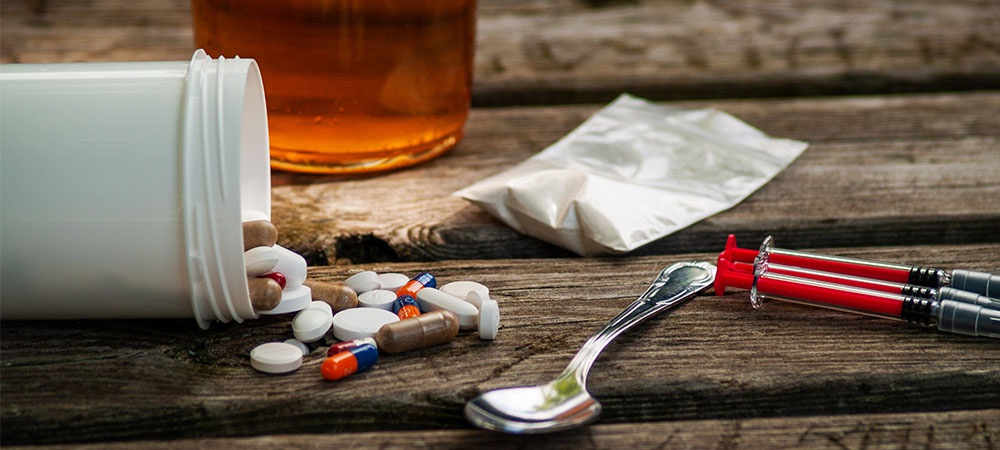Barbiturate Addiction in Canada
It is common practice to make judgements on the use of prescription drugs. Some believe they are a fundamental part of the healthcare system. Others believe they are a drug like any other and a risk to our health. The truth about prescription medications, namely barbiturates, lies somewhere in the middle. They have advantages and a real medical purpose, but they can also be abused.
Barbiturates refer to a group of drugs that are known as sedative-hypnotics, and they work to depress the central nervous system. Because they have this depressing effect on the nervous system, they are also called “downers”. They are often administered to patients in hospitals for anesthetics and post-surgical purposes. They can also be prescribed for the treatment of insomnia, anxiety, headaches, and seizures.
For the small number of medical issues, they can help, barbiturates also come with high risk. Is there no better way to treat these conditions or symptoms? Is the risk worth the benefit? How did barbiturates come to be abused? Discussing these questions will help us understand barbiturate addiction in Canada and what we can do about it.
History of Barbiturates
The first barbiturate was synthesized in 1881 by Conrad and Guthzeit, and it was introduced to clinical settings in 1904. Of the first analogs created, phenobarbital was the first to reach consumers. Phenobarbital was employed in therapy as a hypnotic for the first time in 1912.
Eventually, over 2500 different barbiturates would be synthesized and used as hypnotics and anticonvulsants, and also for pain management. 50 of these became available by prescription. There are a few different types of barbiturates, listed as follows with some of their nicknames or “street” names:
- Amobarbital (downers, blue velvet, blue devils)
- Pentobarbital (yellow jackets, Mexican yellows, nembies)
- Phenobarbital (purple hearts, goofballs)
- Secobarbital (Pinks, pink lady, reds, red devils, F-40s)
- Tuinal (Rainbows, reds and blues, gorilla pills, F-66s)
The manufacturing of barbiturate drugs reached its peak in the 1950s when enough barbiturates were being manufactured to treat 10 million people each year in the United States alone. In the 1960s and 1970s, the drug increased in popularity. At the same time, rates of death and suicide in connection with barbiturate use skyrocketed. One of the more famous cases of note would be Marilyn Monroe, who died in 1962 of a barbiturate overdose. This was suspected to be an intentional act.
This increase in overdose leads governments in both England and North America to place heavier restrictions on the dispensing and use of the drug. Some groups, such as CURB (Campaign on the Use and Restrictions of Barbiturates) took action to oppose prolonged-acting barbiturates in the 1970s.
It was also around this time that alternative drugs, such as benzodiazepines (benzos), were introduced for the same conditions that barbiturates are intended to manage. Barbiturates, like Benzodiazepines, work by enhancing the effects of GABA (Gamma-Aminobutyric acid), an inhibitory neurotransmitter in the central nervous system. However, the therapeutic index of barbiturates is much lower than that of benzodiazepines. This means that the window of how much is safe compared to the amount of drug that could be lethal is quite low. Essentially, there is a very high risk that the dose of a barbiturate could quickly reach a dangerous or lethal amount.
This is the largest contributing factor as to why barbiturates, for the most part, are now used much less frequently. Since the introduction of benzodiazepines, overall use has dropped dramatically. Benzos can still be abused, but they are associated with a lower mortality rate than barbiturates.
Barbiturate Use in Canada Today
It was reported by the Substance Abuse and Mental Health Services Administration (SAMHSA) that nearly 3 million Americans used barbiturates recreationally in 2014. This data is surprising, considering the overall declining trend of the use of barbiturates. Even though they are used less now than in the 1960s and 1970s, barbiturate abuse still remains an issue facing North Americans today.
Currently, it is more specifically used for the treatment of seizures, insomnia, and preoperational sedation. In Canada, prescription sedatives are used by about 9% of the population. This figure was relatively stable between 2008-2011.
Most recently, barbiturates have been used to treat head injuries. One clinical study in 1988 demonstrated how a high dose of barbiturates could help patients dealing with severe head injuries who are experiencing intractable intracranial pressure elevations (pressure on the brain, often caused by an increase in cerebrospinal fluid). The results of this study were quite promising; however, more recent research was unable to support this finding any further.
Overall, sedative drug use is more prevalent among Canadian women than men, with the figure of women at 12%, and men at 5.9%. First Nations community members also show a high instance of sedative drug use. 5.7 % of First Nations adults who live on reserves or in northern communities reported using sedative drugs recreationally from 2008-2010.
2.2% of First Nations youth aged 12-17 used sedatives or sleeping pills at that same time without a prescription. Using any kind of drug at such an early age can be detrimental to brain development. Children of that age have a lower body weight overall, so the dose for barbiturates would be extremely small. As such, these youths are at a much higher risk for overdose.
Seniors have the highest rate of sedative drug use overall, which was reported as 14.4% in 2011. These figures give us an idea of the general use of these types of drugs, however current data regarding the use of sedative drugs, and barbiturates specifically, is actually quite lacking.
Without this additional data, it is difficult to pinpoint more current trends in Canada regarding barbiturate use. Having this data would allow for better planning of the appropriate use of this drug. It would also provide the opportunity to create more effective treatment opportunities for those struggling with barbiturate addiction.
Symptoms and Side Effects of Barbiturate Use
The effects of barbiturates can be helpful in a clinical setting, or for specific treatment when monitored by a medical professional. However, these drugs can also be used inappropriately. It is postulated that most often, abuse of these drugs happens in the first place as a way to reduce symptoms of anxiety. This motivation can lead an individual to use barbiturates inappropriately, or to use them too frequently, both of which mean abuse of the drug.
The most common method of administration when abusing barbiturates is oral ingestion of the pill form. Some users dose the drug in a liquid form, which can be injected. This leads to a much quicker delivery into the system. Signs of barbiturate use can be seen almost immediately. This is because the drug itself easily crosses the blood-brain barrier, allowing it to affect the user right away.
This drug is often abused because of its very short-term psychoactive effects. Barbiturates can lead the user to feel less inhibited, more relaxed, and more talkative. There are other short and long-term effects of the drug to be aware of.
In general, the effects of these drugs include:
- Confusion
- Impaired judgment
- Slowed heart rate
- Slurred speech
- Reduced inhibition
- Relaxation
The effects of barbiturate use are often compared to those of alcohol, as some of the symptoms do overlap. What makes barbiturates especially dangerous is the risk of overdose. As mentioned, the threshold between recreational or therapeutic doses to overdose is quite small.
Polydrug use, which is the use of drugs in combination, is common with barbiturates. Mixing barbiturates with heroin and other opiate drugs increases the danger of overdose. Mixing barbiturates with amphetamines such as methamphetamines is also dangerous. Alcohol is another substance that is commonly mixed with barbiturates which increases the risk of overdose, respiratory failure, and death.
Symptoms of barbiturate overdose include:
- Drowsiness
- Severe confusion
- Slurred speech
- Poor judgement
- Irritable behaviour
- Low body temperature
- Weakness
- Coordination issues
- Coma
Long-term use of barbiturates can lead to physical dependence. This means that once the drug is discontinued, the user may experience withdrawal. This physical dependence can make it even more difficult to quit barbiturate use. Barbiturates are a highly addictive drug; anyone taking them can become dependent on them.
Barbiturate Overdose
How an individual is affected by barbiturates is dependent on many factors including age, term of use, concurrent use of substances, and more. An overdose happens when an individual takes more of the substance than their body can handle at any given time. An overdose can be accidental, but it can also be intentional.
If you notice or suspect that someone is overdosing on barbiturates, it is important to get them medical attention immediately. This might mean calling emergency services or going to the hospital. What appears to be a very small amount of barbiturates could be lethal, so don’t leave it up to chance if you’re concerned about a possible overdose.
Treatment Options
The first step in the treatment of a barbiturate addiction is detoxification. It is important to detox from barbiturates safely and under the care of medical professionals, as stopping abruptly may be unsafe.
Taking the step to involve medical assistance can help to manage the withdrawal symptoms that are associated with barbiturate use and abuse, such as anxiety, insomnia, restlessness, dizziness, and seizures. The onset of these symptoms is usually between 2-4 days’ post-use and can take up to 2 weeks to subside.
Discontinuing the use of the drug is a brave and crucial first step, and continuing the journey into recovery is the next. There are additional strategies you can implement to help you kick the habit for good.
Addiction Counselling. Recovering from an addiction requires not only getting past the physical dependence on the substance but also working through the emotional dependence. Drugs are often abused when used as a coping mechanism for underlying issues – facing those head-on can be instrumental in helping with recovery.
Cognitive Behavioural Therapy. Cognitive behavioural therapy can help you learn new tools to deal with your thoughts and emotions in a constructive way. This form of therapy focuses on assessing your thoughts and challenging them, adjusting habits and behaviours, and healthy problem-solving. It helps you find a new way of living, and it makes room for habits that will help you push forward to recovery.
Family Therapy. Family therapy provides two very distinct benefits to battling addiction. First, it allows your family to become a part of your support system. It also gives them a way in which to learn how they can help and support you best. Addiction can affect not only you but also your family. This type of therapy provides the opportunity for you to come together as a unit and face the addiction head-on.
Treatment Facilities. Inpatient and outpatient treatment facilities are both great resources to utilize in recovery. Inpatient rehab requires you to stay at the treatment facility. Outpatient facilities, also great support, and give you the freedom to stay at home while attending treatment. Regardless of your choice, both provide support to help guide you through the steps of recovery.
Recovery from Barbiturates
No recovery journey is perfect. There are ups and downs, and some days are much harder than others. It is important to use the resources and tools that you have when you need them.
It is also important to ask for help when you need it too. Recovering from barbiturate abuse isn’t easy, but it’s possible. Reach out for help to recover safely and effectively.










